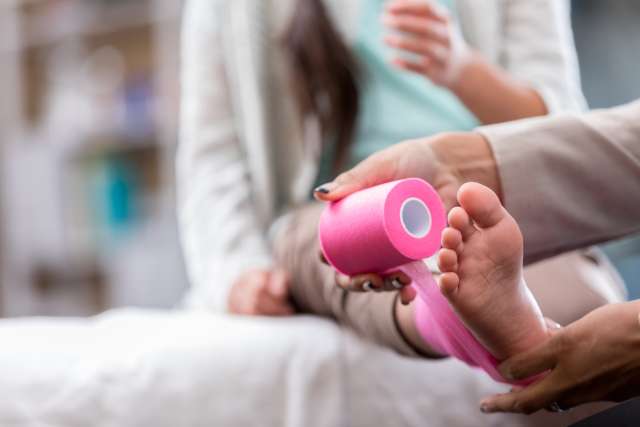Dear Doctors: I twisted my ankle playing soccer, and the coach said it’s sprained. I got it taped and sat out for a few days. It felt better, so I asked to play, but he said no, it still needed time to heal. What happens if I go back too soon?
Dear Readers: When you have a sprained ankle, it means you stretched or tore one or more of the ligaments that help stabilize the joint. There can also be damage to the joint capsule. Sprains happen when something causes your foot to turn, twist or roll, flexing the joint beyond its normal limits. Ankle sprains are common in sports like soccer, where players move at top speed, making sudden and frequent spins and turns. You can also sprain your ankle doing something as simple as walking on an uneven sidewalk.
Your coach is correct -- you do have to take your sprained ankle seriously and let it completely heal. The ligaments that support and stabilize the joint are made of ropelike bands of collagen. Although they are tough and flexible, their ability to stretch is limited. Movement that forces a ligament beyond its normal range can cause damage. Due to limited blood supply, ligaments heal slowly.
The degree of damage determines the severity of the sprain. In a mild sprain, also known as grade 1, the ligament has stretched too far but has little or no tearing. Symptoms include minor swelling, along with pain and tenderness. You can typically bear weight on the injured ankle and walk, but more strenuous activity is uncomfortable. A grade 2 sprain means the ligament is partially torn. This results in pain, swelling and maybe minor bruising. It can be hard to bear weight on your foot, and it may feel unstable. A grade 3 sprain is the most severe. The ligament has torn completely, and the joint capsule may be injured too. Grade 3 sprains cause considerable pain and swelling, as well as visible bruising. In a grade 3 sprain, you can’t support any weight on the joint.
You can treat grade 1 and 2 sprains at home. You can stabilize your ankle, use over-the-counter anti-inflammatories to manage pain and swelling, and rest. Typically, icing sprained joints to reduce swelling has been recommended, but this advice is changing. Icing reduces blood flow to the region and may slow the process of healing. A grade 3 sprain is a severe injury. Seek immediate medical attention for diagnosis and treatment.
Gradual and targeted physical activity is important to healing from a sprain. Exercises should focus on strength, stability and range of motion. A premature return to rigorous activity can worsen the existing sprain, leave you vulnerable to hurting yourself again and lead to chronic instability in the joint. In asking you to wait longer to return to the soccer field, your coach is protecting you from a more serious injury.
(Send your questions to [email protected], or write: Ask the Doctors, c/o UCLA Health Sciences Media Relations, 10960 Wilshire Blvd., Suite 1955, Los Angeles, CA, 90024. Owing to the volume of mail, personal replies cannot be provided.)





